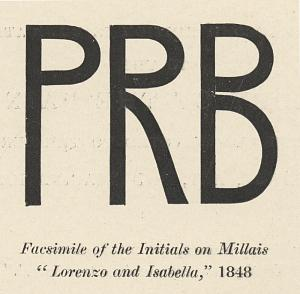
Not to be confused with deliciously hipster lager
Can you even imagine being part of a secret society? Just think of the secrecy, the danger, and the adventure. PRB, which stood for Pre-Raphaelite Brotherhood, started appearing as signatures on the works of English artists in 1848. For a while, they were basically the Victorian-era Banksy; it took two years for folks to catch on to the artists’ true identities, and it’s rumored that one of the artists leaked it himself. The PRB were seven heady young artists who opposed contemporary academic painting and the idea that the Italian Renaissance artist Raphael represented the highest standard in painting. Okay, so maybe there was no real danger, but they really had something against the guy!
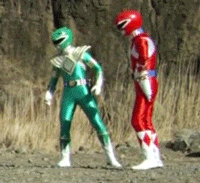
Even though they were members of the esteemed organization, the PRB detested the Royal Academy of Art and especially its founder Sir Joshua Reynolds, whom they called “Sir Sloshua.” Pretty sick nineteenth-century burn. Then again, they also sincerely believed that the power of art could cure all of English society’s problems. The PRB thought that, in classic mo’ money mo’ problems fashion, England’s post-industrialization wealth had ushered in a corrupt and morally bankrupt society. They painted to advocate a return to the ideals of the Middle Ages – a time before all that industrialization nonsense.

They apparently also all loved redheads even more than Manet loved Victorine Meurent, his own red-headed muse. Although the true blue brotherhood broke up in the early 1850s, the movement had a lasting effect.
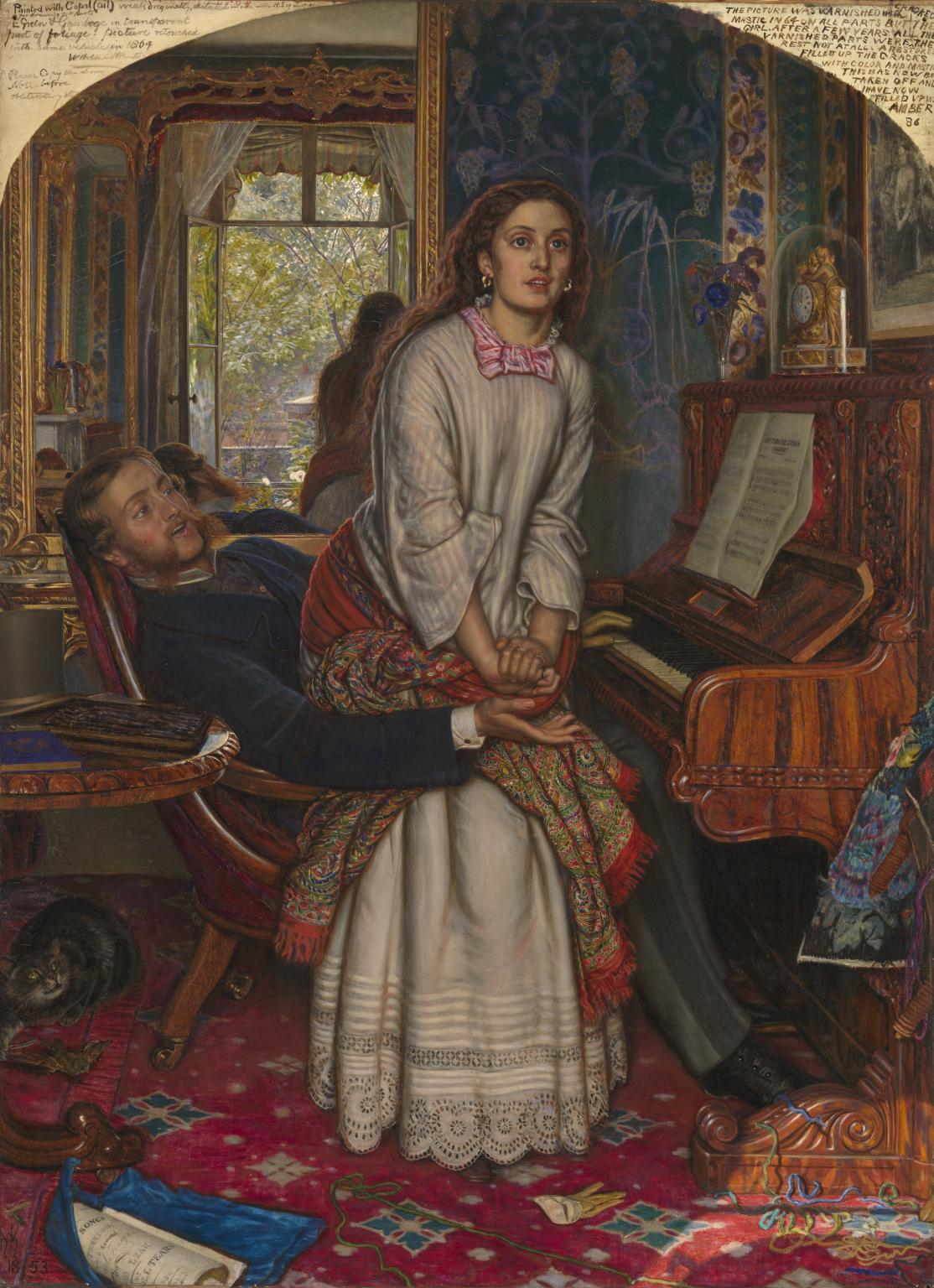
The Awakening Conscience by William Holman Hunt at Tate Britain.
William Holman Hunt, one of the founding bros, was the most religious of the PRB. Despite its unintentional hilarity, this painting has a clear moral message. Holman Hunt’s striking colors and wholesome subject matter are lifted right from the work of Jan van Eyck, an artist who was apparently way better and more worthy of our attention than Raphael was.
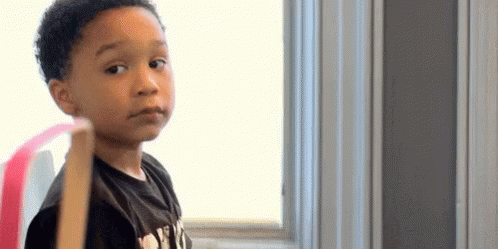
Holman Hunt’s painfully awkward scene illustrates the moment when a woman realizes that prostitution is never the answer, no matter how good the money is. This elaborate painting condemns the contemporary plight of women turning to prostitution to earn a stable income. He drew inspiration from a passage in the Charles Dickens novel "David Copperfield." This was pretty funny, considering Dickens hated the PRB style of painting, especially Sir John Everett Millais’s painting Christ in the House of His Parents.
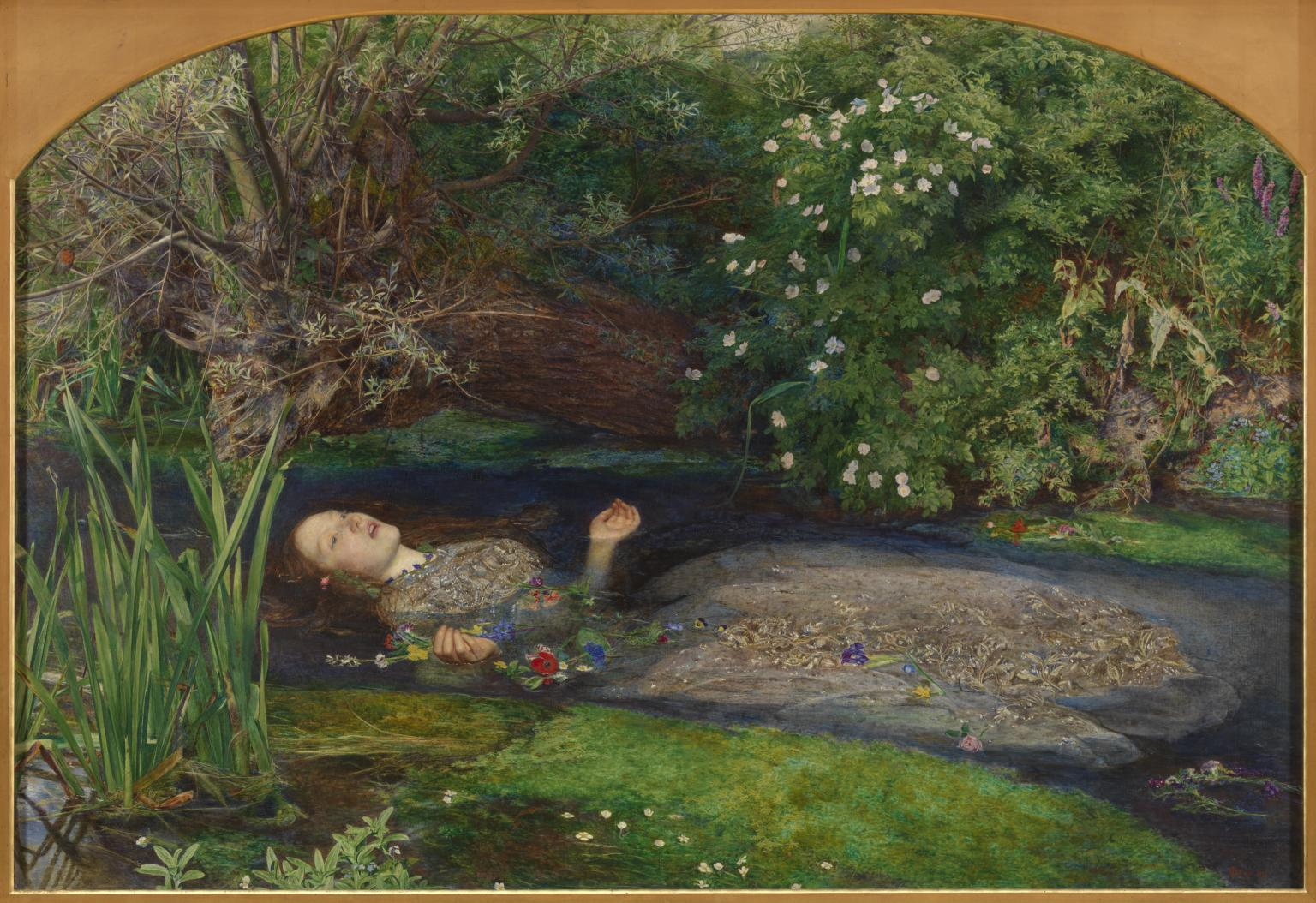
Ophelia by John Everett Millais at Tate Britain
That’s Sir John Everett Millais to you. At just eleven years old, Millais was the youngest student to ever study at the Royal Academy. You know, that thing that all of the PRB hated so much. Shakespeare was another favorite subject for the PRB painters. Millais was nothing if not thorough. He painted painstakingly from nature and hired PRB groupie and muse Elizabeth Siddal to pose for Hamlet’s ill-fated Ophelia. To get the scene just right, poor Lizzie had to pose in a bathtub full of water...for over four months’ time. In true supermodel muse fashion, Lizzie Siddal later died at thirty-two years old after struggling with drug addiction.
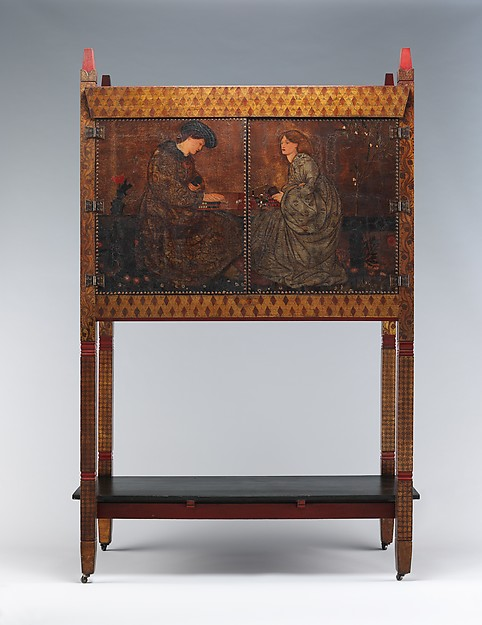
The Backgammon Players by Sir Edward Burne-Jones at The Metropolitan Museum of Art.
Because the PRB hated industrialization so much, they rebelled against the poor standards of commercially-manufactured objects. In other words, they would NOT have liked IKEA. Instead, they created their own super-special, hand-crafted furniture in what would become known as the Arts and Crafts Movement. The idea was that artists and artisans could team up to help reduce the amount of items on the market made in gross factories.
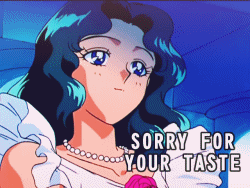
In a not-so-shocking turn of events, the lady on this extravagant cabinet is also a redhead. William Morris, one of the cabinet’s manufacturers, loved these kinds of works and became obsessed with making his own wallpaper designs.
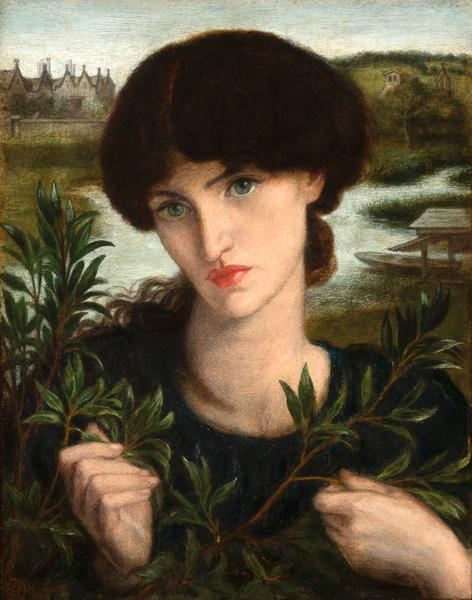
Water Willow by Dante Gabriel Rossetti at the Delaware Art Museum
I would call this painting haunting, but I’d just be meaning to say that it’s creepy. The woman who modeled for this work was one of the other typical pre-Raphaelite muses, who eventually married fellow artist William Morris. However, this didn’t stop her from having torrid love affairs with the other members of the group, especially Dante Gabriel Rossetti.

Rossetti and Morris planned to rent a summer manor together in 1871, which you can see in the back of the painting. Of course, Morris brought along his wife Jane...and you can guess what happened next. This painting belongs to the gigantic collection of Pre-Raphaelite works outside of England – strangely enough, at the Delaware Art Museum.
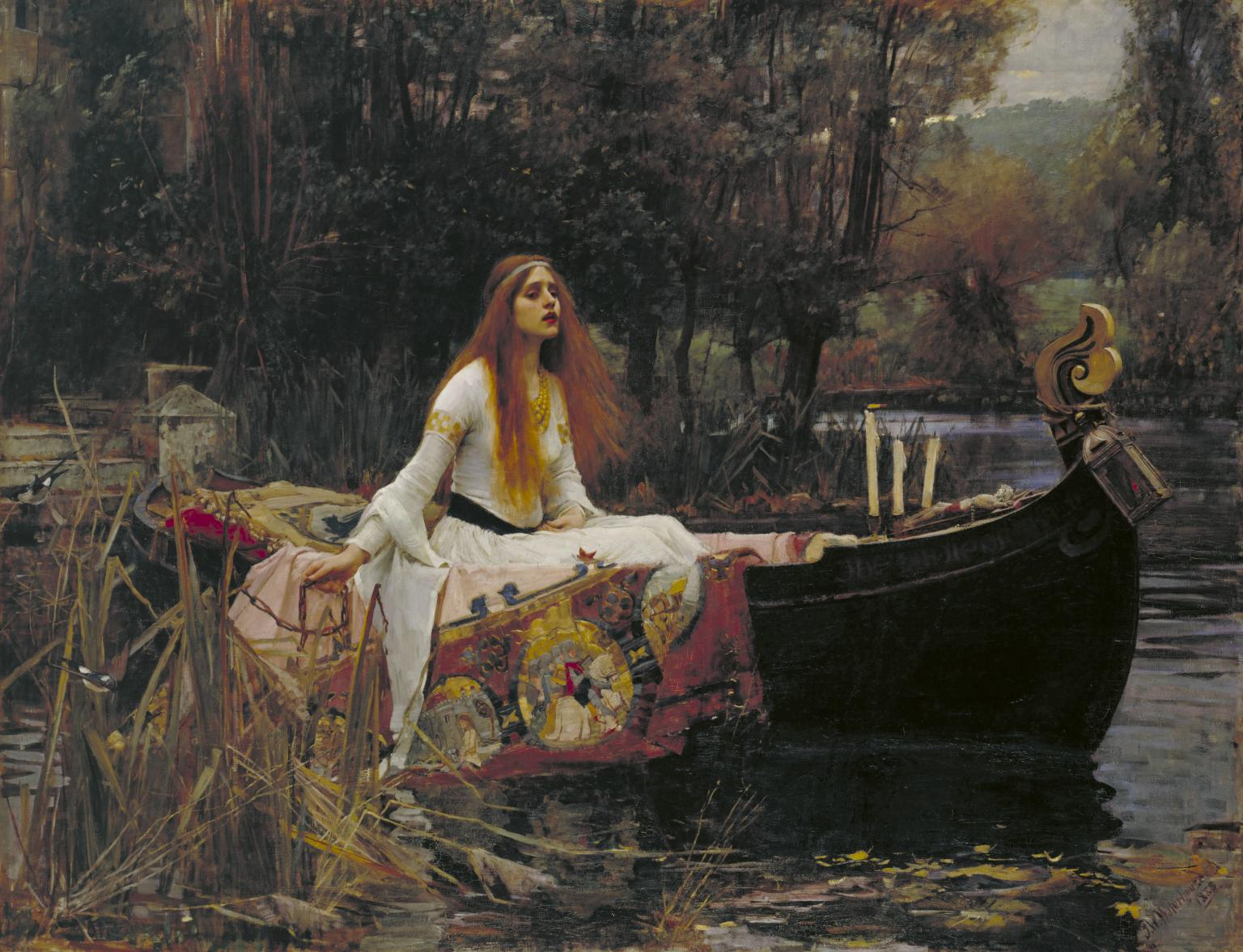
The Lady of Shalott by John William Waterhouse at Tate Brtain
As much as the PRB loved Shakespeare, they also loved other poetry, including the works of Alfred, Lord Tennyson. This borderline spooky painting is a powerhouse example of what the Victorian era had to offer. It was even one of the original artworks Sir Henry Tate donated to begin his art museum legacy at the turn of the twentieth century.
The PRB just really wanted to make art that meant something to them and, hopefully, also to other people. They rebelled against the type of art that they knew to boldly create new styles that were never seen before. To find out more, you could always watch the special BBC mini-series "Desperate Romantics," devoted to the rise of the Brotherhood. How very English.
By: Amanda Lampel
Sources
- Cartner-Morely, Jess. “Stealing Beauty.” The Guardian. August 21, 2004. https://www.theguardian.com/artanddesign/2004/aug/21/art.fashion. Accessed May 21, 2018.
- Davies, Penelope J.E., Frima Fox Hofrichter, Joseph Jacobs, Ann M. Roberts, and David L. Simon. Janson’s Basic History of Western Art. 8th edition. Upper Saddle River, NJ: Pearson Education, Inc., 2009.
- Delaware Art Museum. The Samuel and Mary R. Bancroft Collection of Pre-Raphaelite Art. http://www.preraph.org/. Accessed May 28, 2018.
- Delaware Art Museum. “Water Willow.” Collections. http://emuseum.delart.org:8080/emuseum/view/objects/asitem/5805/24/titl…. Accessed May 28, 2018.
- Hughes, Kathryn. “Manet’s forgotten muse: Victorine Meurent.” The Telegraph. Jan 25, 2013. https://www.telegraph.co.uk/culture/art/art-news/9802721/Manets-forgott…. Accessed May 21, 2018.
- IMDb. “Desperate Romantics.” https://www.imdb.com/title/tt1346018/. Accessed May 28, 2018.
- Meagher, Jennifer. “The Pre-Raphaelites.” The Metropolitan Museum of Art. October 2004. https://www.metmuseum.org/toah/hd/praf/hd_praf.htm. Accessed May 21, 2018.
- Riggs, Terry. “Ophelia,” Tate. February 1998. http://www.tate.org.uk/art/artworks/millais-ophelia-n01506. Accessed May 21, 2018.
- Riggs, Terry. “The Awakening Conscience.” Artworks. March 1998. http://www.tate.org.uk/art/artworks/hunt-the-awakening-conscience-t02075. Accessed May 21, 2018.
- Tate. “Pre-Raphaelite.” Art Terms. http://www.tate.org.uk/art/art-terms/p/pre-raphaelite. Accessed May 21, 2018.
- Tate. “The Lady of Shalott.” Art & artists. http://www.tate.org.uk/art/artworks/waterhouse-the-lady-of-shalott-n015…. Accessed May 28, 2018.
- Tate. “Think You Know the Pre-Raphaelites?” List. http://www.tate.org.uk/art/art-terms/p/pre-raphaelite/think-you-know-pr…. Accessed May 21, 2018.
- The Metropolitan Museum of Art. “The Backgammon Players.” Collection. https://www.metmuseum.org/art/collection/search/195456. Accessed May 21, 2018.









